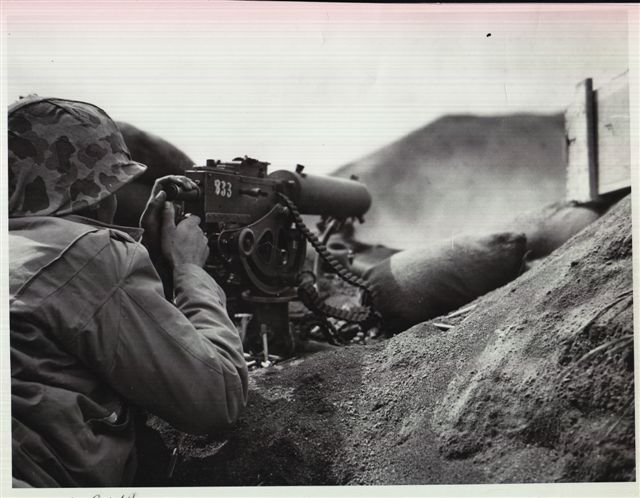Zombie Soldiers in World War II? Really?

US Marine fires a 1917 Browning watercooled machine gun on Iwo Jima.
No. Not really. But US forces in the Pacific, on occasion, did face charging hordes of screaming mad men, bent on killing them at all cost, which very much resembled the classic “zombie scenario.” This was the Japanese Banzai attack.
The Japanese fighting man in World War II was a tenacious fighter. Not only because he was well trained and highly motivated, but also because obedience, honor, and duty weren’t just words to them, but a way of life. These qualities were instilled into the Japanese people through the Samurai moral code of Bushido, translated as “the way of the warrior”. In its purest form, the Bushido code had benevolent qualities that were discarded by the ruling military establishment to tailor the code to suit their needs for military conquest. This indoctrination resulted in soldiers who were relentless, fantastically cruel, and uncompromisingly loyal. The Japanese soldier in World War II was all in; it was either victory or death, nothing in between. The Banzai attack was a method of Gyokusai, or honorable suicide, which translated means “A man would rather be a shattered Jade than a whole roof tile.”
Accounts from American servicemen who faced these attacks described the experience as sickly terrifying. Soldiers and Marines heard the enemy screaming and hollering for hours as they “pumped themselves up” for this final act, then usually in the dead of night they came. Dozens, hundreds, and sometimes even thousands of Japanese troops would charge while screaming “Banzai,” translated as “ten thousand years”.
How did our servicemen fight off these attacks? With lots of machine guns. One of the most effective weapons against the human wave attack was the Browning water-cooled M1917A1 machine gun. As long as the gun had water in the jacket and ammunition in its chamber, it could fire without interruption, dispatching the attackers in droves. Another effective weapon was the 37 mm anti-tank gun. When used with a special canister round consisting of many small projectiles, the 37 mm acted as a giant shotgun.
In the end, Japanese Banzai attacks did more for the American war effort than the Japanese. American troops dreaded the suicide charge, but knew that when it was over, Japanese resistance in that sector was finished. US forces were more than willing to oblige the Japanese soldier who’d rather die than surrender.
This post by Curator Larry Decuers
- Posted :
- Post Category :
- Tags :
- Follow responses to this entry through the RSS 2.0 feed. You can skip to the end and leave a response. Pinging is currently not allowed.




Leave a Reply